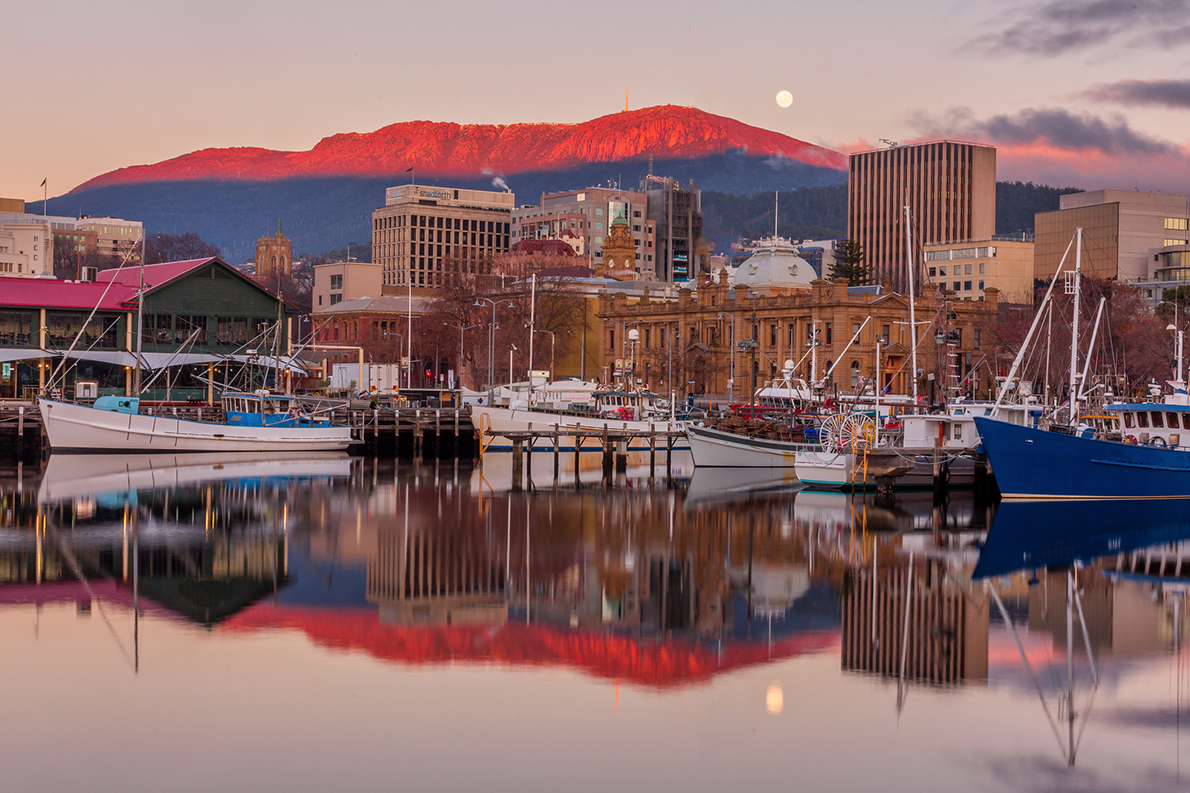 Sunrise at Constitution Dock in Hobart
Sunrise at Constitution Dock in Hobart
An island state of Australia, there is no denying that Tasmania has a lot of appeal. Not only is it extremely beautiful, but it is more affordable than a lot of the bigger cities. The capital of Tasmania, Hobart, is known for having an incredibly interesting arts and culture scene. If that was not enough, applying for permanent residency in Tasmania is known for being quite straightforward, and it is a location that has high safety levels. When you take all of this into account, it is not hard to see why Tasmania is such a great choice. So, with that being said, we’re going to reveal everything you need to know about moving to this part of Australia.
Finding a home in Tasmania
If you are looking to move to Tasmania, it is always advisable to consider renting a property first. This will enable you to get an understanding of the sort of area you wish to move to and the property that is right for you before you commit to buying.
So, where is going to be the best place in Tasmania for you to live? If you have not got work lined up yet, it would make sense to live near Hobart, Devonport, or Launceston. Of course, there is work in the rural areas and smaller centres, yet they are harder to find. In Hobart, there are a number of lovely regions in and around, including the likes of Derwent Valley, the Channel region, and Huon Valley.
Some of the most charming Tasmanian townships to consider if you’re moving here for a better quality of life include…
- Ross - Ross is a fine heritage village that is located in the Midlands. It was established in 1821 as a garrison. It is noted for having the third oldest bridge in Australia, as well as original Georgian sandstone buildings. There is a lot of history here, and so if you’re looking to move somewhere with heaps of character, look into Ross.
- Stanley - This is a fishing village, which has a good foodie reputation. It is also rich in history as well. It is pretty remote, though.
- Cygnet - Cygnet is another place that has plenty of appeal. The hills are alive with apples, berries, and cherries. The city has long been a magnet for musicians and artists as well.
- Boat Harbour - This is located at the edge of Bass Strait, which is around two hours from Launceston. It features a beautiful beach and charming cottages, making it a desirable choice for those moving to Tasmania for retirement.
In terms of property prices, again, this depends on the location you choose. The median house price in Hobart is $452,000. This is more expensive than Adelaide and Perth. However, the market has started to cool, after experiencing several years of unprecedented growth. This means that you may be able to pick up some more bargains.
Despite the fact that growth has steadied a little bit in Hobart, now is a great time to invest in Tasmania. There is growing and strong demand across the state on the whole. Rental properties are experiencing exceptional rates of return and very low vacancy rates. This means that there are great opportunities for anyone that is looking to buy a property in Tasmania is also thinking about the future.
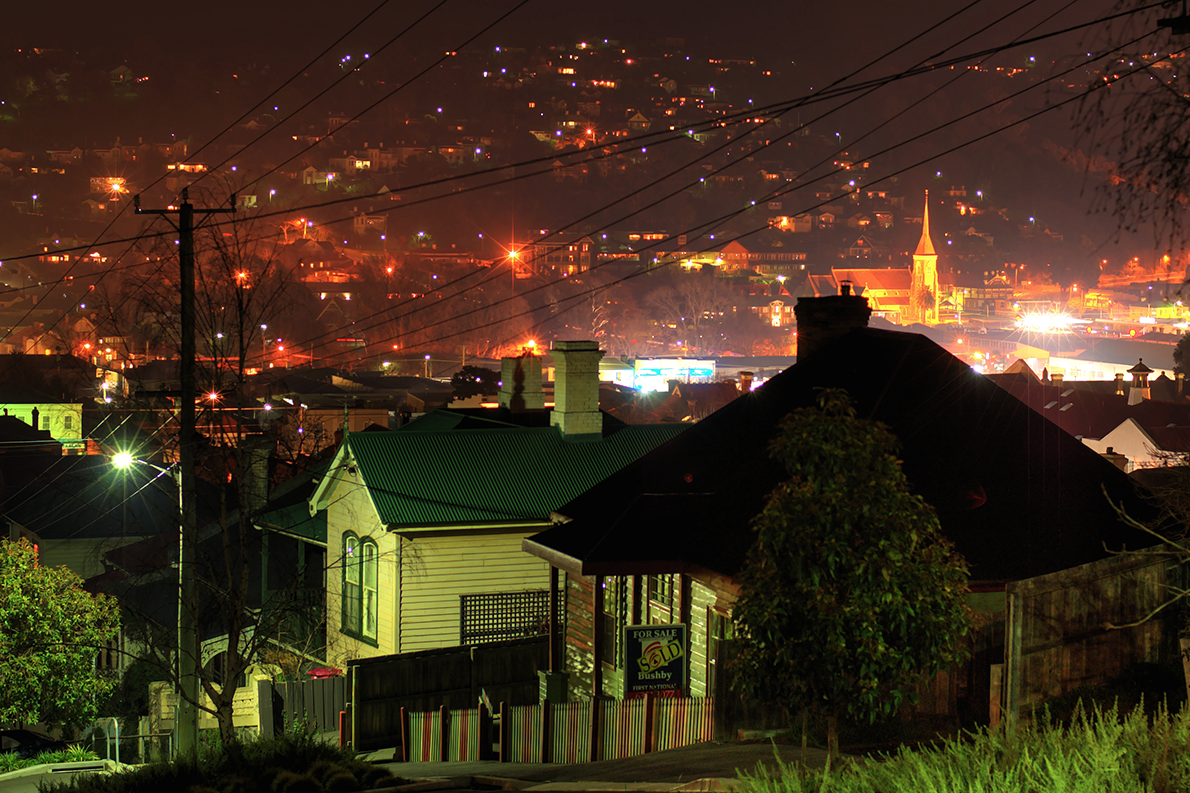 Night time in Launceston
Night time in Launceston
Getting your finances in order
It is important to get your finances in order before you make the move to Tasmania. You need to make sure that the move is something you can afford. Relocation can go wrong if you do not budget for it properly. When it comes to buying a property, for example, there can often be a lot of hidden expenses, and so you need to make sure that these are factored into your purchase so that you know exactly what you’re going to need. Some of the hidden expenses that can be included when it comes to property purchases in Tasmania are as follows…
- Approximately $200 for a strata report
- Between $300 and $400 for a pest or building inspection
- Lenders mortgage insurance
- Loan application fees
- Legal fees, which can be anything from $1,500 to $3,000
- Land tax will need to be paid once per year
- Stamp duty - this is payable within three months of the property being transferred to you
Finding work in tasmania
Some people will have a job waiting for them in Tasmania. However, if you need to secure employment, you will be wondering what you can do in order to put the odds in your favour. Below, we are going to take a look at some of the different industries in Tasmania in further detail, providing you with an overview of the sector and some advice on securing work.
Healthcare
Let’s begin by taking a look at healthcare in Tasmania. This is centred on Hobart, Launceston, and regional hospitals. The healthcare industry is actually the biggest employer in Tasmania. Experienced nurses and allied health professionals should not have too much trouble finding employment here. Moreover, there is high demand for specialists as well. It is a good idea to look for hospital work on the website for Tasmanian Government jobs. To get your foot in the door, there is also an intermittent/fixed-term register. Other options include directly approaching private providers, like nursing homes.
The Arts
Casual gallery staff are often recruited by MONA, especially before big events are due to take place. There is also an employment register at the Tasmanian Museum and Art Gallery for the Visitor Services Officer role.
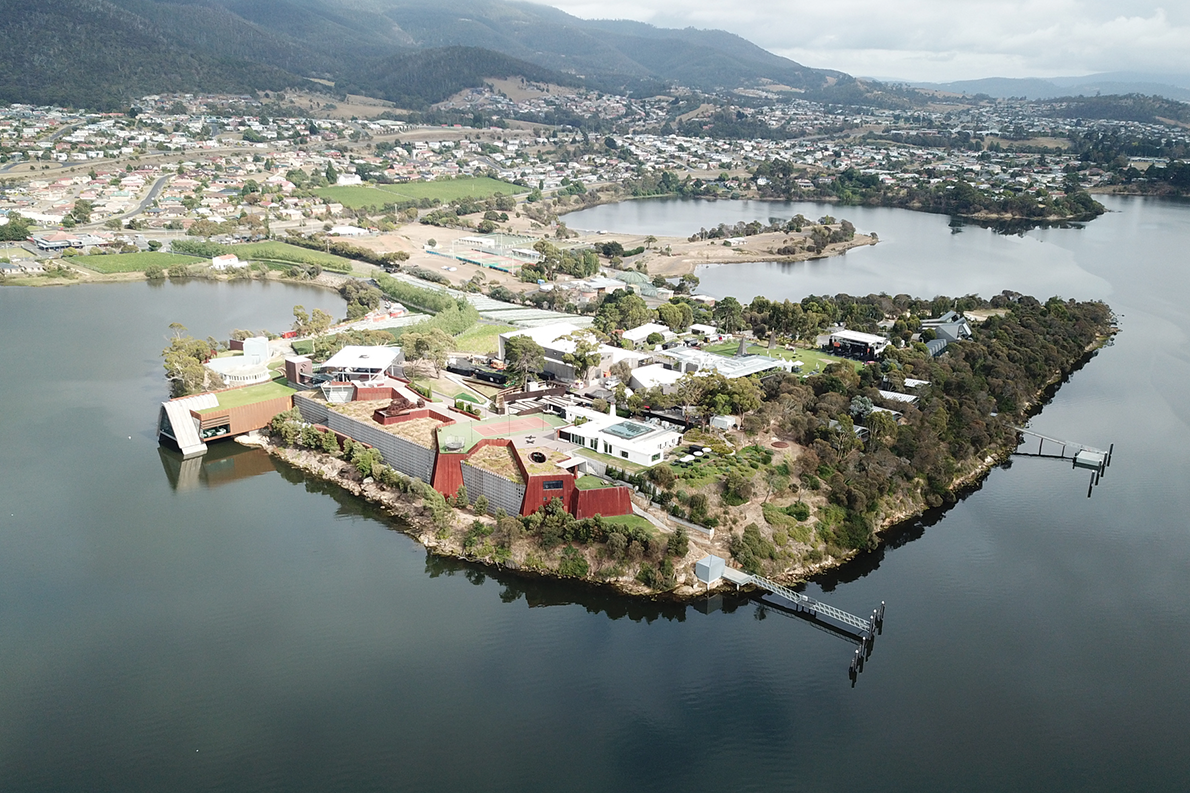 Aerial view of MONA Museum in Hobart, Tasmania
Aerial view of MONA Museum in Hobart, Tasmania
Tourism, adventure, and outdoor roles
There is no denying that Tasmania is a great place for anyone who loves the outdoors. Track workers and track rangers for bushwalking trail maintenance work are commonly employed by the Tasmania government. Hydro Tasmania often recruited people who are mechanically minded to work on their remote sites. Tour-guiding positions also come up at regular intervals. These are ideal for people who are able to absorb and impart local knowledge, point out sights, and are comfortable with driving.
Hospitality and retail
We see positions for retail store managers come up on a regular basis. There is a regular albeit small demand for sales assistants, both in terms of sales people with experience and those of entry level. There is a lot of work in hospitality, and it is not always in the cities. From chef roles to barista; you should have no trouble finding working here. In fact, working in hospitality can give you the opportunity to work in some of the most remote and beautiful locations in Tasmania. There are roles regularly advertised by accommodation providers. Examples include receptionist jobs, as well as concierge and night auditor.
Cell centre work, administration, and IT
You will find that the vast majority of IT work is confined to Launceston and Hobart, Unless you are able to secure a fixed role, you will see that a lot of tech workers move between the mainland and Tasmania. However, self-employed IT professionals that are located in regional towns seem to do well when it comes to offering general services, for example, basic training and repairs.
Construction
There is also a steady flow of work in civil construction. Industries that aren’t really flourishing are mining and forestry. However, residential construction is still happening in Tasmania. This tends to be in areas on the exterior of Hobart. Quality modular property builders seem to be busy. The demand for tradies is in fluctuation, yet electricians do seem to be in high demand.
Farm work
Aquaculture, cropping, viticulture, cattle, and dairy are all thriving here. Local diehards and backpackers tend to pick up fruit picking work here. If you have any sort of skills regarding farm work, for example, vine pruning, fencing, and tractor driving, you are likely to find regular and sporadic work in the rural areas of the state.
Education
Last but not least, we have government school jobs, which are keenly sought after in this state. Relief teaching is a good way for recent graduate teachers to get their foot in the door. It is also worth pointing that there are considerable differences when comparing school life in Tasmania with school life in mainland Australia. Kindergartens, for example, are attached to primary schools, rather than being separate entities. This means that a primary school teacher is also going to be able to teach at kindergarten level.
Living cost in tasmania
Now, let’s take a look at how much it costs to live in Hobart. These figures have been taken from Numbeo. They estimate that it costs a four-person family $4,351 to live in the capital of Tasmania, without rent. For a single person, the costs are estimated at $1,249 without rent. The city is currently ranked 200th out of 464 cities in the world.
To put this into perspective, let’s compare Hobart with one of the most famous capital cities in the world; London. When compared with London, rent in Hobart is 56% lower on average. The cost of living is also 22% lower than London on average.
So, let’s take a look at some of the average costs for different products and activities in Hobart.
- Milk (regular) (1 litre) - 1.32 A$
- Meal for 2 People, Mid-range Restaurant, Three-course - 85.00 A$
- Meal, Inexpensive Restaurant - 18.99 A$
- Taxi 1km (Normal Tariff) - 2.40 A$
- Petrol (1 litre) - 1.59 A$
- Domestic Beer (0.5 litre bottle) - 4.47 A$
- Water (1.5 litre bottle) - 2.88 A$
- International Primary School, Yearly for 1 Child - 9,166.67 A$
- Cinema, International Release, 1 Seat - 18.50 A$
- Fitness Club, Monthly Fee for 1 Adult - 75.92 A$
- Internet (60 Mbps or More, Unlimited Data, Cable/ADSL) - 79.23 A$
- Basic Utilities (Electricity, Heating, Cooling, Water, Garbage) for 85m2 Apartment - 269.69 A$
Education in tasmania
Education is different in Tasmania when compared with mainland Australia. This is because the education system here consists of two tertiary education institutions. This is a number of independent colleges and schools, most of which are sponsored or controlled by religious organisations, as well as the government run K-12 schooling system. The State Government's Department of Education primarily manages public education in Tasmania. The Department is responsible for all parts of schooling. This includes TasTafe, the State Library, Adult Education, and schooling.
Currently, there are 283 different schools for you to choose from in Tasmania. This includes around 50 schools in Launceston and 51 schools in Hobart. In Hobart, most of the schools here are government schools. After this, Hobart Catholic schools are the next biggest group. This is then followed by independent schools in Hobart. Currently, children in Tasmania begin their first formal year of schooling when they are five-years-old. From the age of four-years-old, i.e. the year prior, they will be able to access kindergarten or pre-school.
getting around in Tasmania
Tasmania is a big island that has a small population. It is highly recommended that you drive here. You will find that the vast majority of people use their own private vehicle in order to get around the island. While public transport is available, some of the services are poor. For example, there are no passenger train services between the various towns in Tasmania.
The main form of public transport in Tasmania is bus. You can check out the Tasmania Government website in order to find timetables and maps for the different buses running throughout Tasmania. Aside from this, there is Uber in Tasmania and a number of different private taxi services as well.
Weather in Tasmania
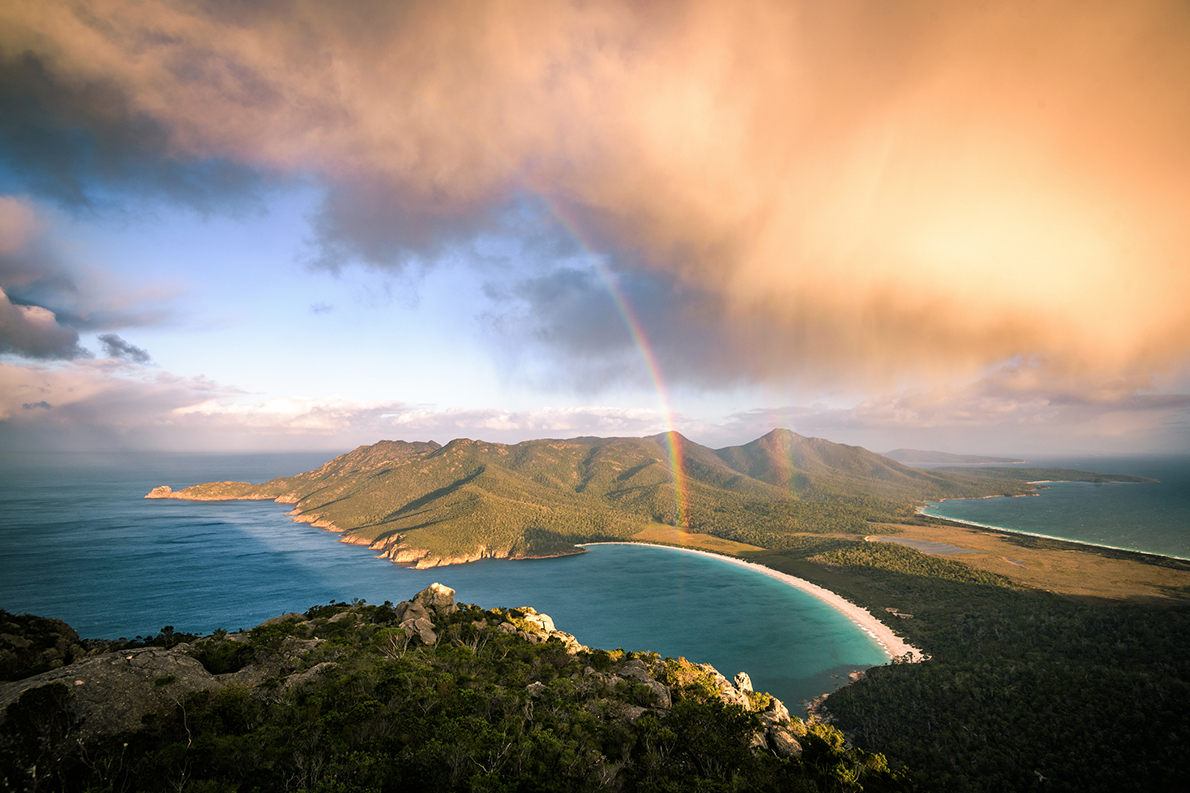 Storm clouds passing by Mount Amos, Tasmania
Storm clouds passing by Mount Amos, Tasmania
You will also want to know what the weather is like in Tasmania. There are four distinct seasons in Tasmania. The warmest months start in December through to March. In the winter, the average daily temperatures are between 3 and 11 degrees Celsius. In the summer, the maximum daily temperatures are between 17 and 23 degrees Celsius.
In terms of rainfall, this varies dramatically depending on where in the island you are based. For example, in the capital of Hobart, you will find that there is not a lot of rainfall. In fact, this is the second driest capital city in Australia, falling only behind Adelaide, with an average of 626 millimetres or rainfall. This is drastically different compared with the west coast whereby the average rainfall per year is 2,400 mm. No matter where you are travelling in Tasmania, you should be prepared for temporary and sudden deterioration in the weather, especially if you are bushwalking. It is always advisable to carry additional warm clothing, which should include a waterproof outer layer.
You can view the average highs and lows in degrees celsius in Tasmania below.
|
Month
|
Strahan
|
Swansea
|
Devonport
|
Launceston
|
Hobart
|
|
Jan
|
11 / 21
|
12 / 22
|
12 / 21
|
12 / 24
|
11 / 22
|
|
Feb
|
11 / 21
|
12 / 22
|
12 / 21
|
12 / 24
|
12 / 22
|
|
Mar
|
10 / 19
|
10 / 21
|
10 / 20
|
10 / 22
|
11 / 21
|
|
Apr
|
8 / 16
|
8 / 19
|
8 / 17
|
7 / 19
|
9 / 18
|
|
May
|
7 / 14
|
6 / 16
|
7 / 15
|
5 / 16
|
6 / 15
|
|
June
|
6 / 13
|
4 / 14
|
5 / 13
|
3 / 13
|
5 / 13
|
|
July
|
5 / 12
|
4 / 13
|
4 / 13
|
2 / 12
|
4 / 12
|
|
Aug
|
6 / 13
|
4 / 14
|
5 / 13
|
4 / 14
|
5 / 13
|
|
Sept
|
6 / 14
|
6 / 16
|
6 / 14
|
5 / 15
|
6 / 15
|
|
Oct
|
7 / 16
|
7 / 18
|
7 / 16
|
7 / 18
|
7 / 17
|
|
Nov
|
8 / 18
|
9 / 19
|
8 / 17
|
9 / 20
|
9 / 19
|
|
Dec
|
9 / 19
|
10 / 21
|
10 / 19
|
10 / 22
|
11 / 20
|
Culture & Entertainment in Tasmania
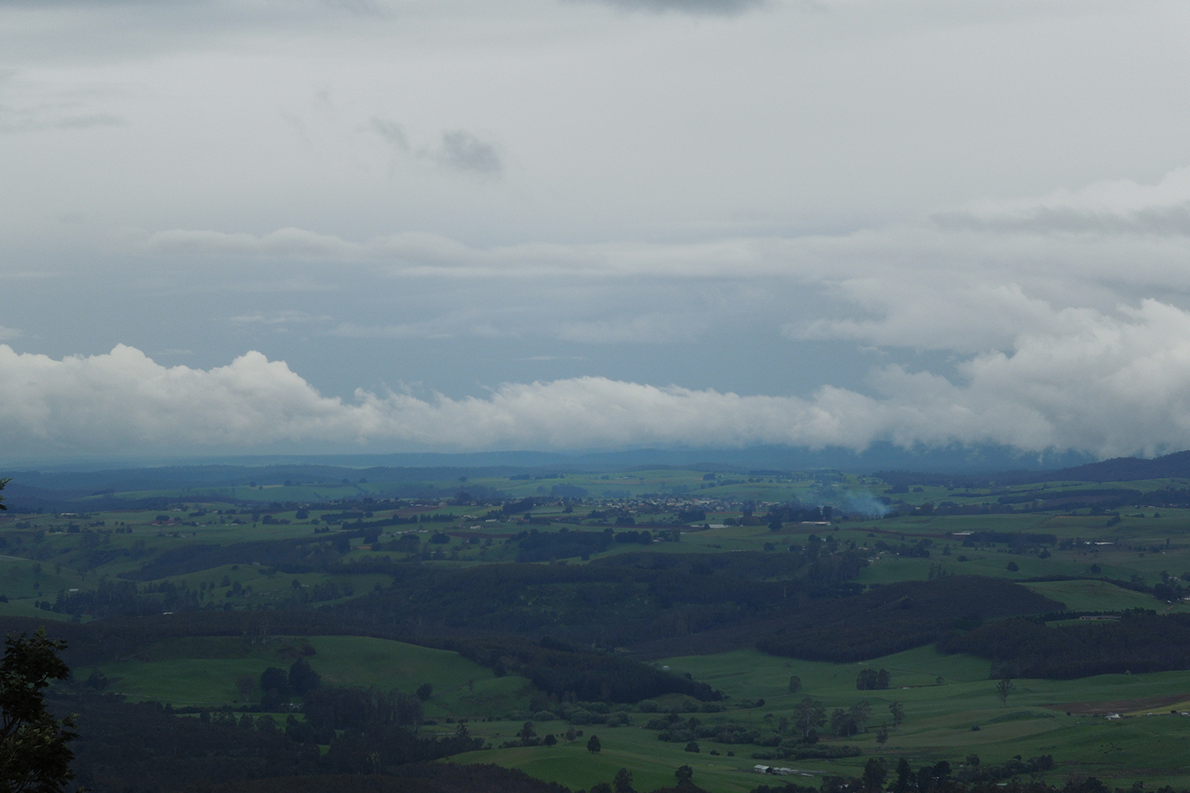 Tamar Valley in Tasmania
Tamar Valley in Tasmania
Tasmania is a quiet state with a slower pace of life. The area is home to seven distinct subregions that produce a number of wine styles. The largest and oldest of these is Tamar Valley. The newest wine region of the state is the North West. you will find a handful of pioneering producers here. It is certainly worth exploring the wine in the region in further depth.
You can expect great food, especially seafood considering where the state is located. Some of the best food taste experiences in Tasmania include scallop pies, freshly shucked oysters, leatherwood honey, meat pies, and wasabi cheese. The food culture is alive and thriving here, and if you like seafood, you’re definitely going to be in for a treat.
MONA museum is a very popular tourist attraction. This is a museum that is situated within the Moorilla winery. It is an art museum that opened its doors in 2011. There are a lot of live performances and large-scale public art exhibitions that are held here. At present, the museum also houses more than 1,900 artistic works from the private collection of David Walsh.
There are also a lot of festivals that go on in Tasmania throughout the year. They begin in January, with the MONA FOMA Festival of Music and Art, as well as the Cygnet Folk Festival. There are then plenty of great festivals that take place throughout the year, including Taste of Tasmania, which is a popular food festival, and the TastroFest, which is the Astronomy Festival held in the state. There is always something going on, so you’re never going to be bored here.
Remove the stress of moving to Tasmania
Working with removalists such a Chess Moving can remove a lot of the stress involved with moving and make it a simple process. No matter whether you are looking to move to Tasmania from within Australia or you are planning on relocating to Australia and Tasmania is somewhere you’re considering, we can assist. Chess Moving has over 100 year experience moving to and from Tasmania. We also have two offices in Tasmania located in Hobart and Launceston as well as every other capital city and some regional locations. We have plenty of experience and all of the equipment to ensure a safe and efficient move, which will make you feel at ease rather than adding to your stress! For more information, please do not hesitate to get in touch with us today. You can use the online contact form on our website or you can dial 13 14 69 to speak to a friendly member of our team directly.
FAQ's about tasmania
Below, we have provided answers to some of the most common questions we receive about moving to Tasmania.
Is it difficult to find work in Tasmania?
Due to the size of Tasmania, as well as the smaller populations outside of the capital city, a lot of people worry about finding work in this part of the world. However, there is an upside to this, and this is the fact that there are rural jobs and tourism jobs that are usually available.
How much does it cost to move to Tasmania?
The cost of moving to Tasmania will depend on the removal firm that you hire, as well as a number of factors. This includes where you are moving from and how much stuff you need to move. The best thing to do is give us a call at Chess Moving and we will be able to put together a quote for you.
How safe is Tasmania?
In terms of safety, Tasmania is considered a safe place to live and visit. However, you do need to be careful when you are enjoying the outdoor activities the island has to offer.
Is Tasmania considered part of Australia?
Tasmania is an island state of Australia. It is often nicknamed Tassie. It is situated around 240 km to the south of the mainland coast of Australia. The Bass Strait separates the two.
Is Tasmania a country or a state?
Tasmania is an island state of Australia. It is considered one of Australia’s six states.
If you have any further queries about moving to Tasmania or you are ready to organise your removal requirements, all you need to do is give us a call today for more information.